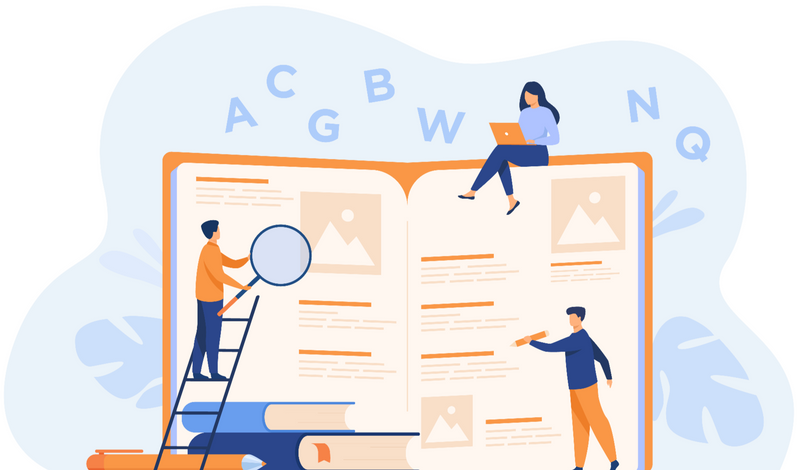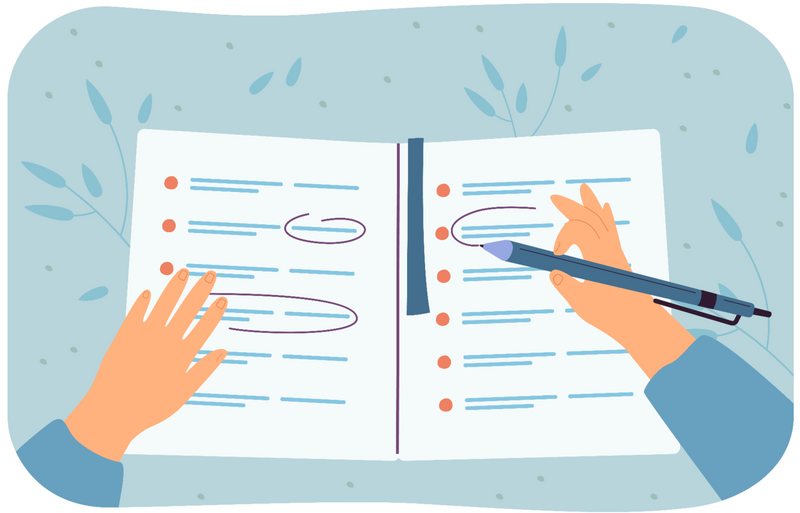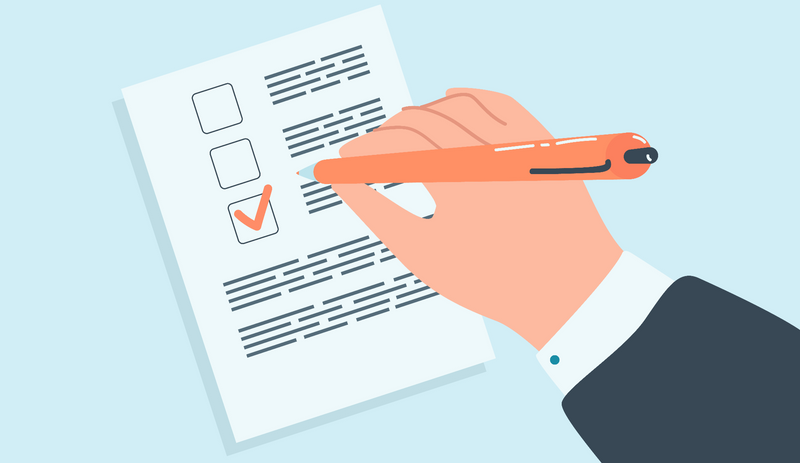
This logo isn't an ad or affiliate link. It's an organization that shares in our mission, and empowered the authors to share their insights in Byte form.
Rumie vets Bytes for compliance with our
Standards.
The organization is responsible for the completeness and reliability of the content.
Learn more
about how Rumie works with partners.
How often have you written something you felt was well written, only to have your reviewer find multiple errors? Editing your own writing can be challenging because you already know what you intend to convey.
Typically, people edit to spot mistakes rather than to enhance clarity or ensure understanding. This can often lead to us overlooking our errors, making the text less clear and harder to understand for the reader.
Use these 6 tips to improve your editing skills and make your writing professional and polished.
Difference Between Proofreading and Editing
1. Keep an Editing Checklist
Look at your previous work samples and add common themes and mistakes to an editing checklist. "Knowing what to look for can not only expand your editing experience but help you become a better writer" and in turn, a better editor.
As you begin to follow a guide, you will improve your writing style and start developing your own style.
You can use The Ultimate Online Editing and Proofreading Checklist for Writers as a guideline to start creating your checklist.
Quiz
What are some other things you can add to your editing checklist? Select all that apply:
Although journal entries are a great way to keep track of your thoughts and ideas, your editing checklist should include resources and information that help structure and improve your writing.
2. Keep It Simple
 Instead of...
Instead of...
In order to
At the present time
Due to the fact that
In the event of
With the exception of
 Use this...
Use this...
To
Now/currently
Since/due to
If
Except for
Every word and phrase should add value to your content. Avoid using filler words, clichés (overly used phrases), and complex sentences, as they can distract the learner.
Instead of writing "he was listening with his ears," write "he listened." The meaning is the same, but unnecessary words have been removed. Using an active voice allows you to keep your writing simple and to the point.
3. Read It Out Loud
Mistakes are often easier to see when printed on paper than on screen. Print your written work and read it out loud while highlighting the errors to correct.
Another way to read your writing out loud is to let the computer do the work! Many writing programs (e.g., Microsoft Word) and operating systems (Mac OS and Windows) have accessibility features built-in, which you can use to have your text read to you.
This is a great way to "listen to the flow of your writing" and bring attention to any typos.
Quiz
What are the benefits of reading aloud? Select all that apply:
Reading aloud helps you catch errors through comprehension, tone, and transitions. This helps improve your writing and helps you focus.
4. Align the Content to Your Topic and Proof Your Layout
 Image by pch.vector on Freepik
Image by pch.vector on Freepik
When you write, you are writing for an audience. Know the audience and what they might be interested in learning about. Think about how the content connects to your topic.
Give your work a logical structure. As you edit, here are some questions you can ask yourself.
5. Change the Flow, Read it Backwards
Sometimes, the easiest thing you can do for comprehension is change how you usually edit. We all read from start to finish, but have you ever considered reading your work out of order?
This practice helps ensure you pay attention to the writing instead of focusing on the underlying ideas. Looking at paragraphs in isolation helps focus your attention on the content within the section.
An example is reading your work backwards, one sentence at a time. Reading backwards will take your text sections out of context, which makes it easier to catch transitions, missing information, spelling, and grammatical errors.
Quiz
What are some other methods you can use to change the flow of editing? Select all that apply:
Looking at the same content in the same font style and color can trick your mind, as things begin to look the same. Changing the font style and color can help you see the text from a new perspective. Changing the headings, however, won't make the overall text look different enough.
6. Wait and Repeat
 Image by pch.vector on Freepik
Image by pch.vector on Freepik
Take a break from your editing. Walking away from your writing and returning to it with fresh eyes can help you gain a new perspective "by creating emotional distance between you and your work."
Focusing on the same thing for too long makes it harder for your brain to catch errors, so give your writing space and time — when you return to your writing, "you may find yourself with an entirely new outlook."
This Byte has been authored by
Shalini Sadana
Learning & Development Professional
 Image by pch.vector on Freepik
Image by pch.vector on Freepik
 Image by pch.vector on Freepik
Image by pch.vector on Freepik


